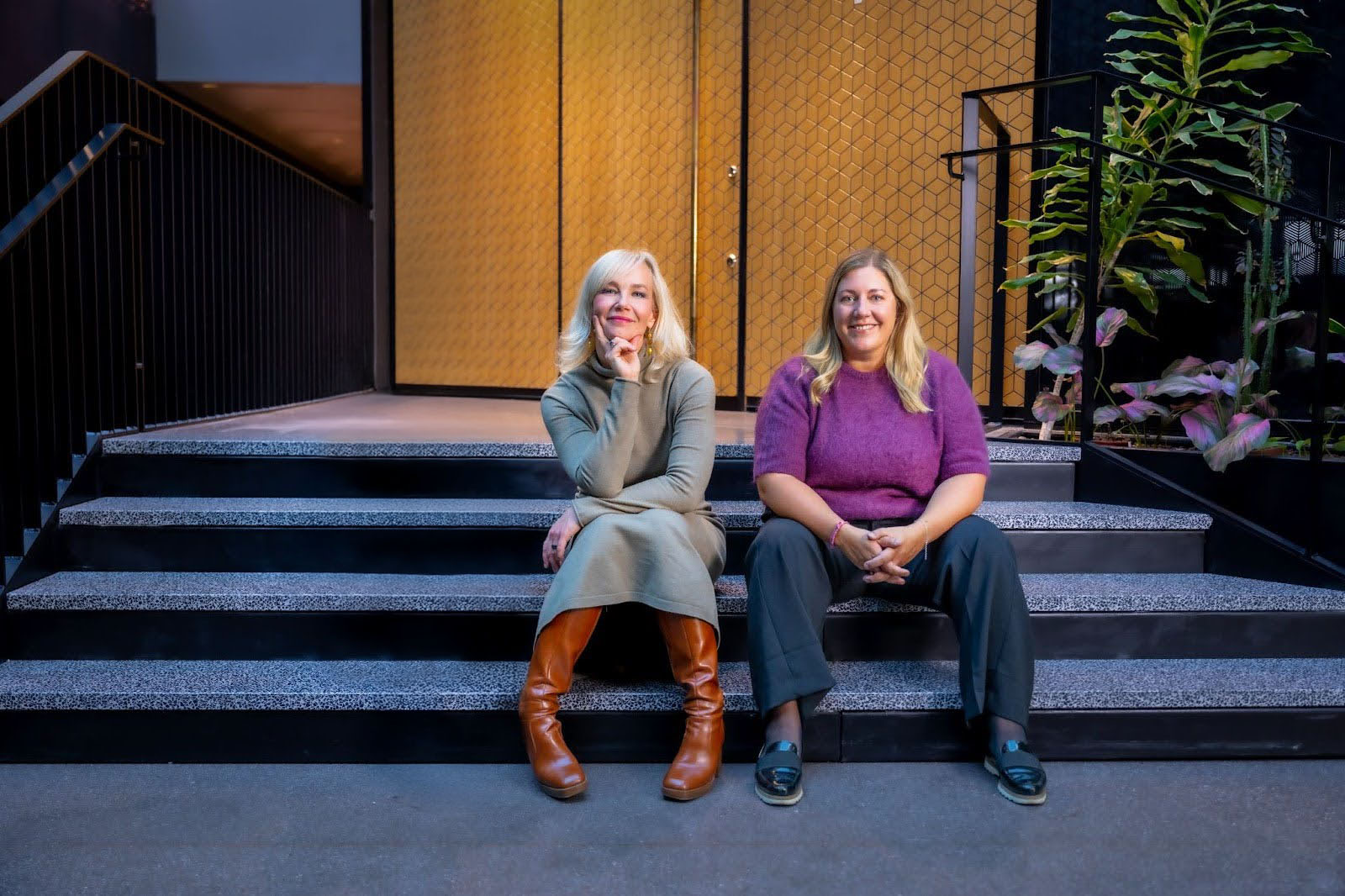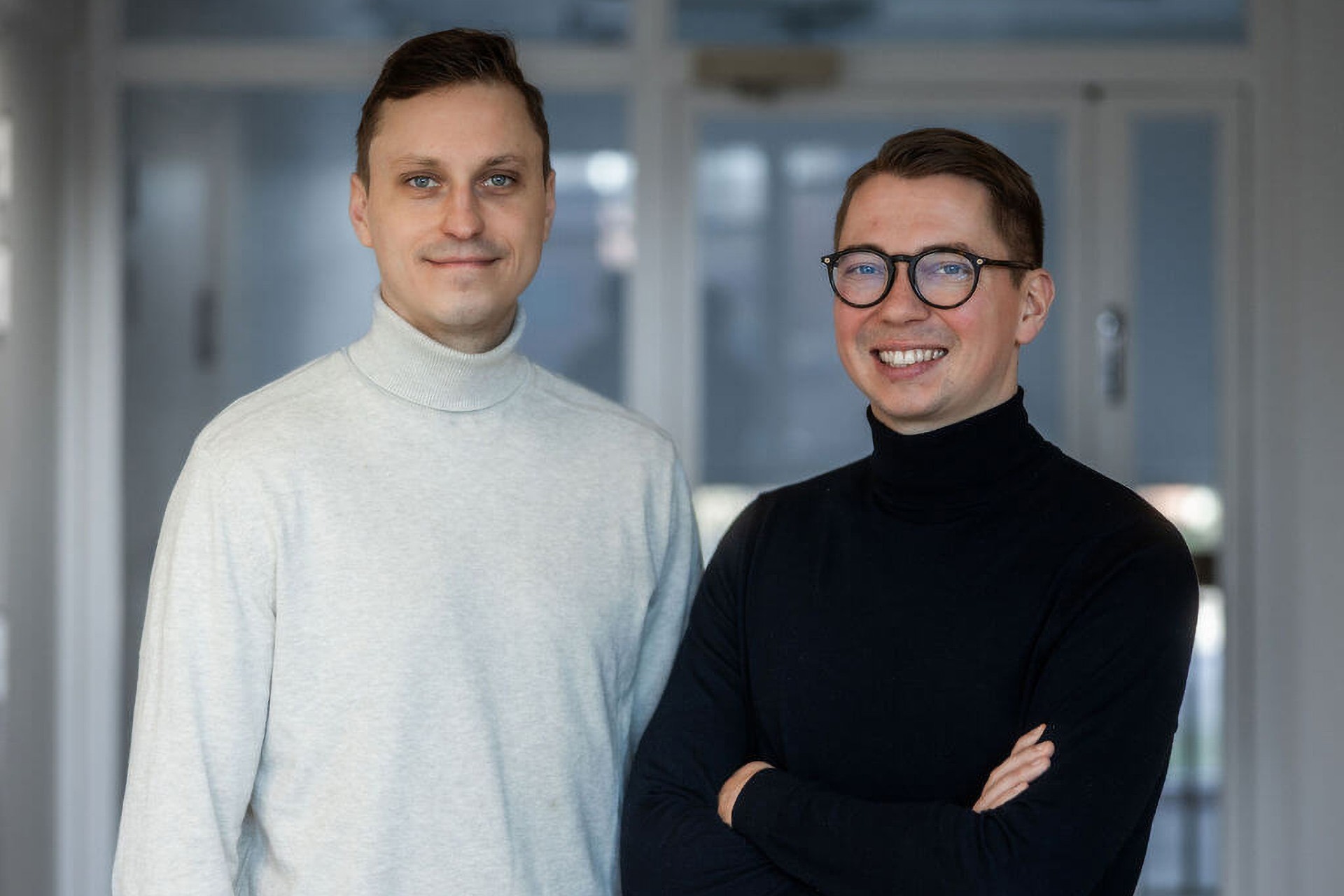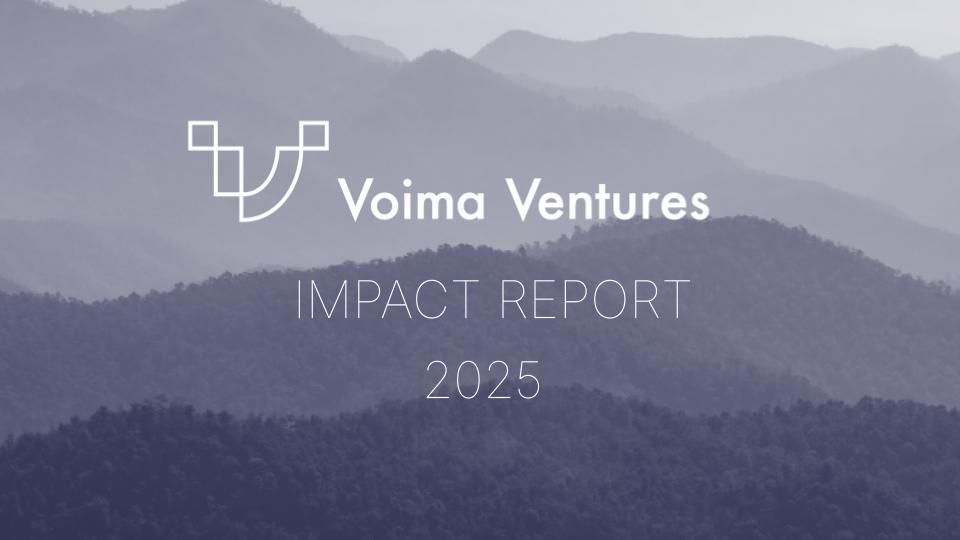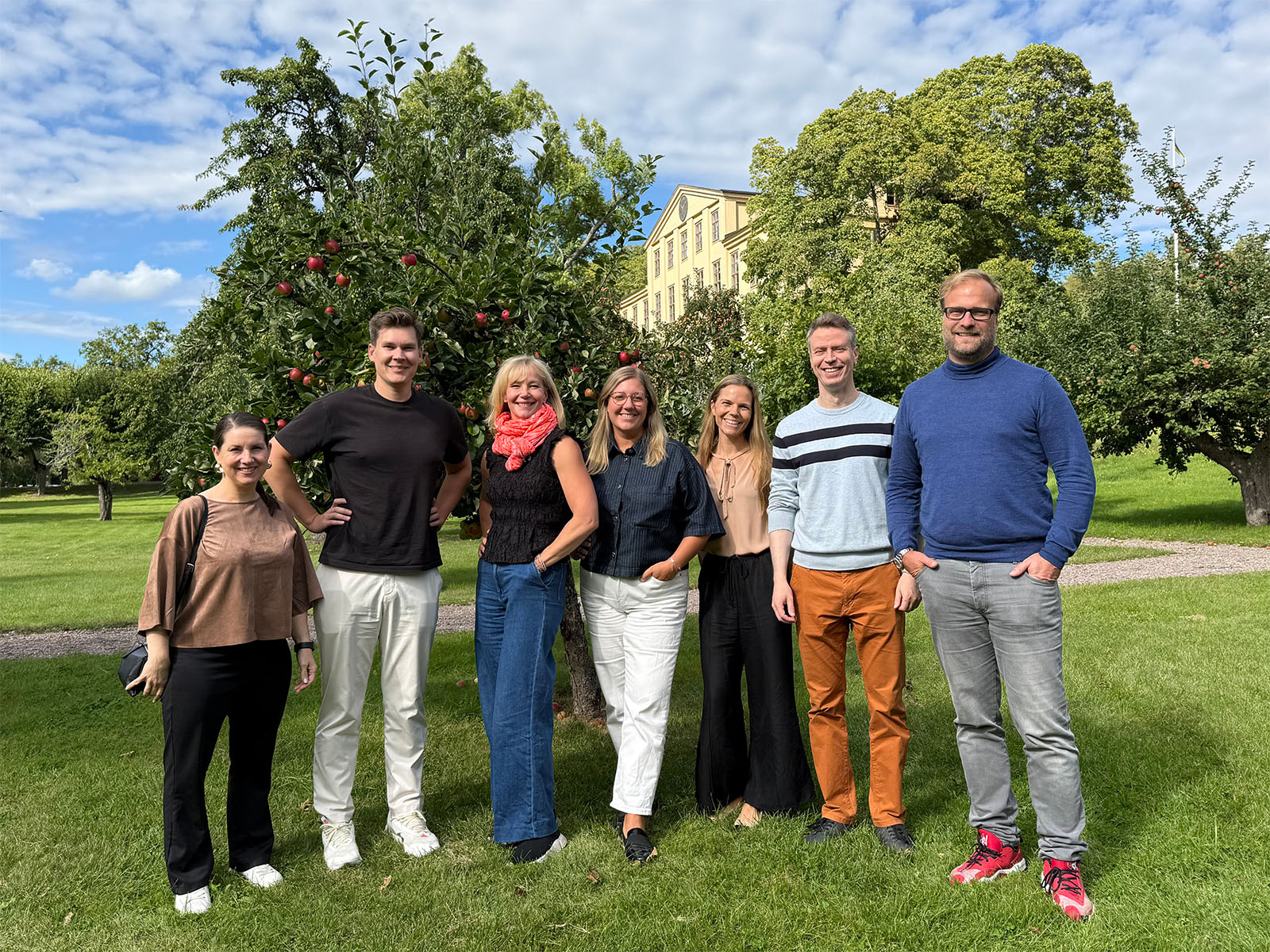Venture activity has shifted rapidly and decisively toward AI, and the share of capital flowing into the field keeps rising. But how do we, at Voima Ventures, view the market and the investment opportunities, what’s happening in the AI startup battlefield in the Nordic and Baltic region, and most interestingly – what’s next?”
Yes, AI Is Eating the World – and Venture Capital
Trying to raise money without an AI angle in your startup? Don’t. In 2025, “no AI” is the new “no thanks.”
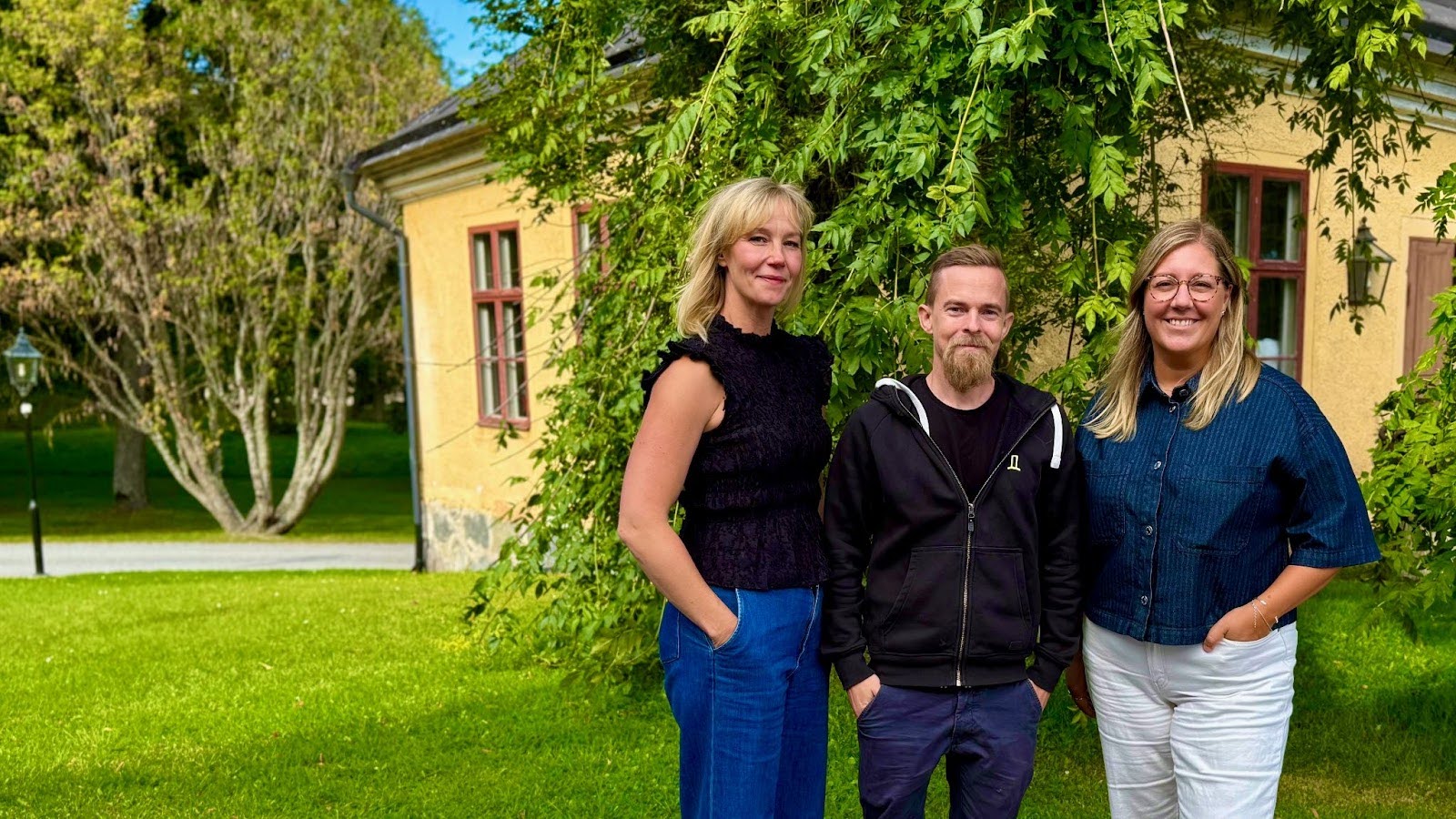
This post is written by Inka Mero, Managing Partner (left) and Jenny Engerfelt, Partner at Voima Ventures (right). Voima Ventures recently invested in Swedish-based Farang, an AI lab developing a new foundational LLM and SLM model. Founder Emil Romanus in the center.
AI now dominates both VC deal value and volume like no technology wave before. PitchBook reports that 71% of total U.S. VC deal value in Q1 2025 went to AI and machine learning. Even after stripping out OpenAI’s record-breaking raise, AI still claimed half of all invested capital and a third of the deals.
So is it a bubble or not a bubble? Globally, the pattern repeats: AI startups take nearly two-thirds of venture capital, up from less than half just a year ago. By October 2025, Bloomberg reported $192.7 billion invested in AI startups, which is the first time in history that more than half of all venture dollars went to a single theme. The last comparable moment was the internet boom of 1999. We’ve seen multiple hype cycles in VC, also during the 2000s: the cleantech decade, crypto and fintech. This time, though, the fundamentals: data, infrastructure, and market pull, are real.
But here’s the twist: those eye-popping numbers hide an even starker truth. The AI boom is being pulled into orbit by a handful of gravitational giants. In early 2025, just eight companies captured $73 billion of the $118 billion invested in AI. Think of it as the blockbuster era of venture capital: a few franchises dominate the box office while everyone else fights for screen time. And the stars of this show? OpenAI with SoftBank’s mega bet, Scale AI with Meta’s massive stake, xAI, Anthropic, Safe Superintelligence, Anduril, Mistral AI, and Nscale, plus China’s Moonshot AI and the Nordics’ Helsing.
Why the frenzy? Because the potential prize is staggering. The global AI market is already nearing $300 billion, on track to hit $1.77 trillion by 2032. PwC predicts that AI will inject $15.7 trillion into the global economy by 2030, which is roughly the GDP of China, through productivity gains and consumer value.
No wonder 83% of global CEOs now list AI as a top priority and nearly 100 million people already work in AI-related roles.
2025 marks the first time in modern history when a single technology doesn’t just influence venture capital; it consumes it. AI isn’t eating the world. It’s eating venture capital first.
Nordic and Baltic Momentum in AI – Deep Tech and the Layers of Intelligence
Meanwhile, AI and agents may be eating global venture capital, the Nordics and Baltics are at the same time shaping their deep-tech backbone for AI – from photonic chips and spectral sensors to next-generation agent frameworks and quantum-enhanced models.
Venture investors often map the AI universe as a stack: from the hardware that powers it to the applications that deliver it. To simplify, think of two halves: AI enablement (the compute, data, and tools that make AI possible) and AI services (the models, APIs, and vertical apps that bring it to life).
We gathered some of the latest AI rounds from pre-seed to early A and some A rounds. You can find the full list here by country.
Here’s how it looks across layers and some examples moving in the north:
| Layer | Purpose | Nordic/Baltic examples – latest rounds | |
|---|---|---|---|
| Hardware & compute | Chips, GPUs, networks, supercomputers, hyperscalers | DataCrunch (€55M European AI cloud); Agate Sensors (€5.6M spectral sensing); Tzafon (€ 8.4M Seed, AI-driven browser automation infra) IQM (€600M Quantum computers). | |
| Platform & tooling | MLOps, DataOps, orchestration, Developer tooling and vector DBs attract | Lovable (AI coding unicorn since 2025). Cambri (€8M, product innovation and consumer insights), Encube (€20M seed, AI-powered tool for hardware design teams). | |
| Foundation models | LLM, SLM and multimodal developers (Mistral & others) | Farang (€1.5M next-gen models); FirstQFM (€1.2 M pre-seed, quantum-accelerated LLMs). Interhuman AI (€2 M pre-seed, base model research developing a social intelligence layer for AI) | |
| Agents& APIs | Interfaces and API layers. Tools that wrap LLMs into services (Adept, Perplexity, vertical SaaS). | Hubert (€2.3 M seed, AI-first hiring platform), Kiku (€4 M seed, AI-powered recruitment platform), Noteless (€ 3.6M Series A, digital assistant for healthcare). Tana (€13.6 M Series A, AI-native workspace). | |
| Vertical applications | Sector-specific value. Capital shifting toward healthcare, defence, energy, legal tech. | Taito.ai (€2.3 M seed, performance management), Nordic Air Defence (€2.5 M seed, AI-powered drone inspection platform), Cerebriu (€15M series A, automating MRI workflows). |
Voima Ventures’ Deep-Tech Lens
As a Nordic deep-tech VC, Voima Ventures looks beyond software-only AI plays. Our thesis follows a deep-tech AI stack built on scientific foundations and long-term defensibility.
- Hardware and compute frontier – The base layer: photonic chips, quantum processors, novel memory architectures, and energy-efficient sensors. Our investment in Agate Sensors exemplifies this. Other examples from the domain: DataCrunch’s AI cloud and Finnish superconducting-qubit initiatives. These technologies form the physical substrate of intelligence and the frontier of scalable and sovereign compute.
- Data and platform convergence – The glue connecting hardware to real-time data. Includes edge-AI firmware, secure data protocols, and robotics. Overlaps with domains like defence (Sensorfusion), energy systems (Capalo AI), materials discovery (Jälle Technologies), and quantum-enhanced simulation (FirstQFM). This is where the digital and physical world merge, enabling machines not only to compute but to sense, act, and adapt.
- Domain-vertical applications – The top layer where hardware, software, and expertise merge into products with defensible moats: Better Medicine in diagnostics, Capalo AI in energy storage, Lightsonic in defence autonomy, and Agate Sensors in agricultural vision. These deep-tech ventures take time, but address multi-billion-euro markets and reshape industrial value chains.
- Research-to-impact ladder – From fundamental research to engineering translation and industrial scale-up. Knowing where a company stands defines both capital intensity and strategic support needs. Translating lab results into industrial relevance and impact will build global competitiveness.
What’s Next – Opportunities and Caution
Shift from infrastructure to applications. Frontier labs still attract mega-rounds, but capital is drifting toward real-world verticals. Expect more funding in health, finance, defence, and legal tech, areas where Nordic founders already excel in regulated, data-heavy environments. We are seeing numerous examples already now, with large rounds in Tandem Health and Legora for example. Gen AI has made AI mainstream for content creation, efficiency and creativity, but what’s next is solving global challenges with the breakthroughs being made with AI. Imagine autonomous discovery engines that simulate and run lab experiments to invent new materials, fuels, or personalised medicine based on a complete understanding of our cells. We believe in AI solving problems at the scale of science, energy, and even life itself.
Physical AI – The embodiment of intelligence. The next frontier goes beyond digital cognition to machines that learn and interact with the world in real time. From industrial robots with adaptive vision to autonomous systems that navigate unstructured environments, physical AI fuses hardware, data, and algorithms into self-improving systems. It bridges the gap between bits and atoms, driving breakthroughs in manufacturing, logistics, healthcare, and energy. One market analysis by Citi suggests there will be 1.3bn AI-robots by 2035 and 4bn by 2050. For the Nordics and Baltics, where hardware, materials science, and systems engineering are core strengths, this is a natural arena to lead globally.
Hardware renaissance. Semiconductor shortages and sovereignty concerns are reviving interest in compute and sensing innovation. The EU Chips Act and NATO’s deep-tech programs could funnel investment into Nordic high-tech manufacturing and quantum infrastructure. As advancements are being made with physical AI and the wider adoption of robots across industries, we will see innovation across hardware itself, from advanced sensors and actuators to new compute architectures, energy-efficient chips, and materials that enable machines to perceive, adapt, and operate more intelligently in complex environments.
Data, compute and capital convergence. The next phase of AI innovation will be driven by the intersection of proprietary data, specialized and scalable compute, and long-term capital. As general-purpose models become commoditized, value creation will shift toward domain-specific intelligence trained on scientific, industrial, and operational data. This will require deeper collaboration between research institutions, compute infrastructure, and investors who understand both the technical and commercial pathways to scale. It will also require energy efficiency spanning from infrastructure and processing to devise specific efficiency.
The human layer. The next era of AI will expand what humanity is capable of, rather than simply replacing human effort. In health and longevity, AI will interpret vast layers of biological and behavioral data to create truly personalized care and prevention. Education and training will also evolve through adaptive systems that tailor learning to individuals, organizations, and even entire sectors. This human-centric approach to AI, augmenting cognition, creativity, and collaboration, will define how societies harness intelligence as a shared resource.
Planetary Systems. One of the most profound frontiers for AI lies in tackling the planetary-scale challenges of climate, energy, and resource management. Models that can predict and simulate environmental change are already informing how we design resilient infrastructure and decarbonized supply chains. AI-driven energy optimization is advancing everything from grid stability to fusion control and next-generation battery chemistry. In parallel, new applications in agriculture and food systems are improving crop yields and resource efficiency through precision monitoring and synthetic biology. As manufacturing becomes increasingly circular, AI will help close material loops, reduce waste, and optimize production lifecycles, making sustainability not just an ethical imperative but a competitive advantage.
Bubble risks are real. With 95% of companies yet to see tangible ROI from AI, discipline matters. Founders must focus on stellar execution, revenue paths and proprietary IP, not hype. For VCs like Voima Ventures, that means backing teams with scientific depth, execution discipline, solving impactful problems, and the stamina to scale.
Final Thoughts
AI is no longer a niche, it’s the engine driving the global tech economy. But not all layers of the stack will win equally. The real opportunity lies where deep science meets applied intelligence: in hardware breakthroughs, cross-disciplinary platforms, and domain-specific solutions. We are entering a new phase of AI development, where the focus is shifting from experimentation to execution. The next generation of innovation will be built on stronger scientific foundations, smarter data infrastructures, and more sustainable compute. It will be about systems that understand complex environments, make decisions, and deliver measurable impact across health, energy, manufacturing, and security.
At Voima Ventures, we believe the winners of this era will be those who bridge research and application, building intelligent systems that are robust, responsible, and scalable. By staying grounded in deep-tech fundamentals and avoiding the noise of short-term hype, the Nordics and Baltics can define their own path in AI leadership.
From the far north, the next generation of AI champions is already emerging and we’ve only seen the beginning.
